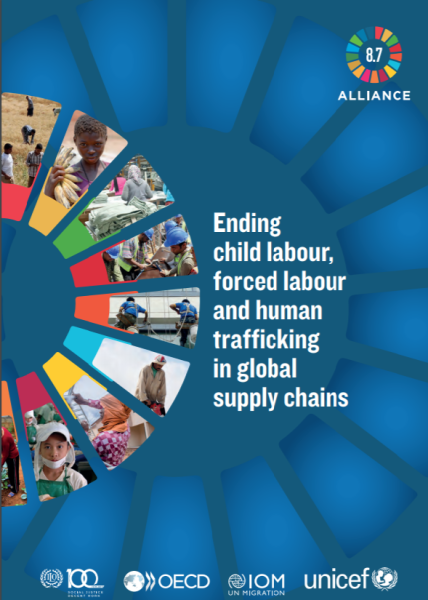Ending Child Labour, Forced Labour and Human Trafficking in Global Supply Chains

This report presents the joint research findings and conclusions on child labour, forced labour and human trafficking linked to global supply chains from the International Labour Organization (ILO), the Organisation for Economic Co-operation and Development (OECD), the International Organization for Migration (IOM), and the United Nations Children’s Emergency Fund (UNICEF), under the aegis of Alliance 8.7. It is the first attempt by international organizations to measure child labour, forced labour and human trafficking in global supply chains. The report responds to the Ministerial Declaration of the July 2017 meeting of the Group of Twenty (G20) Labour and Employment Ministers, asking “the International Organisations in cooperation with the Alliance 8.7 for a joint report containing proposals on how to accelerate action to eliminate the worst forms of child labour, forced labour and modern slavery in global supply chains including identifying high risk sectors, and how to support capacity building in the countries most affected”. It also responds to the Buenos Aires Declaration on Child Labour, Forced Labour and Youth Employment, November 2017, which called for “research on child labour and forced labour and their root causes … pay[ing] particular attention to supply chains”. The report seeks to inform public and business policies and practices in order to prevent child labour, forced labour and human trafficking in global supply chains, and to protect its victims. It also recognizes the multidimensional nature of these violations and the smart policy mix necessary to address them. It considers not only the risk factors and policy interventions related to addressing the vulnerability of people, but also the unique complexity of global supply chains that can hide abuse and the links with informality and migration.
